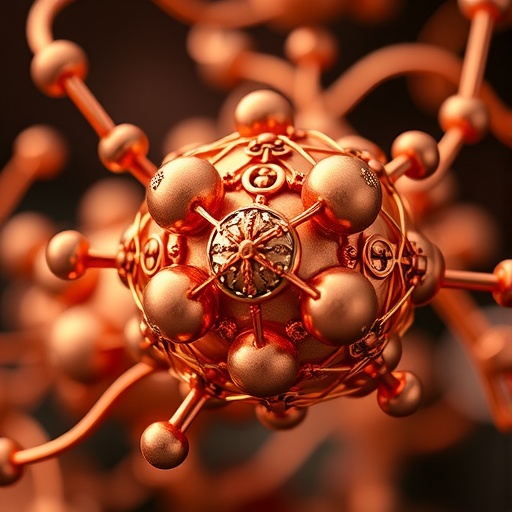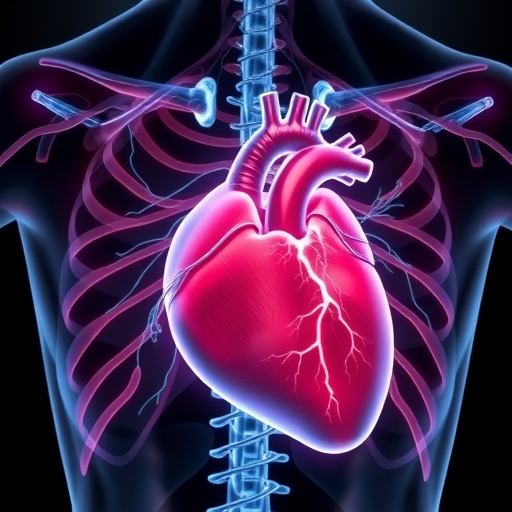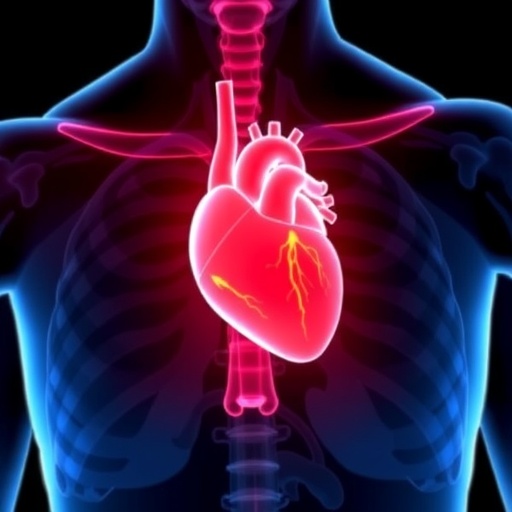The intricate dance of electrons within transition metal catalysts is a cornerstone of modern synthetic chemistry, yet many mechanistic details remain shrouded in mystery. Copper, a versatile and abundant metal, occupies a central role in catalyzing the formation of carbon–carbon and carbon–heteroatom bonds, especially through Ullmann-type coupling reactions. Despite its widespread use and industrial relevance, the true redox nature of copper species participating in these catalytic cycles has been a subject of persistent debate. A recent groundbreaking study by Luo, Li, Wu, and colleagues has now lifted the veil on these elusive processes, delivering unprecedented insights into copper’s redox behaviour and fundamentally challenging traditional mechanistic models.
At the heart of Ullmann-type couplings lies the interplay between copper in various oxidation states. Conventionally, the catalytic cycle has been simplified as a Cu(I)/Cu(II) sequence, with Cu(I) species engaging in oxidative addition to an aryl halide to form Cu(III) intermediates, which then undergo reductive elimination to forge new bonds. However, the transient nature of these intermediates and the rapid kinetics of redox events have historically hindered direct observation and detailed characterization. The study by Luo et al. surmounts these obstacles by combining meticulous experimental design with cutting-edge theoretical computations, revealing a more complex, multi-step redox sequence that incorporates a rarely considered Cu(III)−Cu(II) interplay.
The researchers began by synthesizing a well-defined Cu(I) complex, carefully engineered to interact with an electron-poor aryl iodide substrate. This choice was strategic, as electron-deficient aryl iodides are prone to facilitate oxidative addition steps, a pivotal reaction in the catalytic cycle. Upon reaction with the Cu(I) precursor, the team successfully isolated and characterized a stable Cu(III)−aryl complex — an intermediate that serves as a direct snapshot of the oxidative addition stage. This achievement marks a significant milestone, as Cu(III) species are often fleeting and difficult to capture under typical reaction conditions.
Intriguingly, the behavior of the copper species did not halt at this initial oxidative addition. The detailed mechanistic investigations unveiled an unexpected redox pathway: the copper cycles not straightforwardly between Cu(I) and Cu(III), but rather traverses a more elaborate journey through Cu(I)/Cu(III)/Cu(II)/Cu(III)/Cu(I) states. This phenomenon challenges the orthodox models and suggests that copper’s electronic environment and ligand coordination dynamics exert a profound influence on the catalytic mechanism, possibly affecting reaction rates and selectivity.
Thermal regulation played a crucial role in dissecting this convoluted sequence. By carefully adjusting reaction temperatures, the investigators managed to “freeze” intermediate species along the redox pathway, enabling their detection and spectroscopic interrogation. Various methods including electron paramagnetic resonance (EPR), nuclear magnetic resonance (NMR), and UV-visible spectroscopy were employed to capture real-time snapshots of copper’s oxidation states, ligand environments, and bonding interactions. These techniques furnished a multidimensional picture of the copper species involved and their transformations.
The verification of the Cu(III)−aryl complex’s role in catalysis was further reinforced by computational studies employing density functional theory (DFT). These models substantiated the energetic feasibility of the multi-step redox sequence and provided detailed insights into the transition states governing each phase of the reaction. Notably, the calculations corroborated the experimental observation that reductive elimination from the Cu(III) center efficiently forms the coveted C(sp²)−CF₃ bond, a crucial functionality in pharmaceutical and agrochemical synthesis.
Moreover, the identification of a Cu(II) intermediate sandwiched between two Cu(III) states adds a surprising layer to the redox landscape. This finding implies that electron transfer steps may not be strictly single-step processes but could involve subtle shifts and equilibria. Such complexity reveals potential avenues for catalyst optimization by fine-tuning ligand environments to stabilize desirable intermediates or accelerate rate-limiting steps. It also highlights the risk of oversimplifying catalytic cycles when relying solely on classical oxidation state assignments.
Beyond mechanistic elucidation, the study holds palpable implications for catalyst design and synthetic methodology. Understanding that copper undergoes multiple oxidation state transitions within a catalytic cycle invites chemists to rethink ligand development strategies, potentially harnessing this redox flexibility to enhance catalyst performance and selectivity. Furthermore, the insights may inspire the exploration of analogous pathways in related copper-catalyzed reactions, expanding the toolbox of methodologies available for complex molecule construction.
This research also underscores the power of integrating experimental and theoretical approaches in contemporary catalysis research. Isolating transient species under controlled conditions, complemented by advanced spectroscopic characterization and predictive computational models, emerges as a potent paradigm for unraveling complex chemical phenomena. Such multidisciplinary synergy is likely to accelerate breakthroughs in understanding other metal-catalyzed systems characterized by subtle electronic interplay and rapid redox transitions.
The refined mechanistic model proposed by Luo and colleagues not only advances fundamental knowledge but also paves the way for practical applications. Ullmann-type cross-couplings are widely employed in industrial processes ranging from pharmaceutical synthesis to material science. A detailed comprehension of the underlying redox steps can enable the rational tuning of reaction parameters and catalyst composition, ultimately facilitating more efficient, selective, and sustainable chemical production.
Importantly, this work challenges the established dogma and encourages the scientific community to revisit other accepted catalytic cycles through the lens of advanced mechanistic scrutiny. Copper’s unique electronic properties, including its ability to span multiple oxidation states and variable coordination geometries, exemplify the nuances that must be considered for truly mastering catalytic transformations. The revelations from this study remind us that catalytic cycles are often more intricate than they appear at first glance.
In conclusion, Luo, Li, Wu, and collaborators have decoded a sophisticated redox choreography within copper-catalyzed Ullmann-type coupling reactions. By isolating key intermediates, employing spectroscopic tools, and leveraging theoretical insights, they have charted a previously unseen copper oxidation pathway, redefining our understanding of this pivotal catalytic process. Their findings not only illuminate copper’s redox behavior but also open new horizons for catalyst innovation and reaction development in synthetic chemistry.
As we stand on the threshold of a new era in transition metal catalysis, studies such as this exemplify the transformative potential of meticulous mechanistic investigations combined with modern analytical techniques. They inspire a deeper appreciation of the molecular intricacies that drive chemical reactivity and fuel the quest for novel, efficient catalytic systems. The future of copper catalysis looks brighter and more fascinating than ever, thanks to these pioneering efforts that decode its complex redox essence.
Subject of Research: Redox mechanism and catalytic cycle of copper in Ullmann-type coupling reactions.
Article Title: Decoding the redox behaviour of copper in Ullmann-type coupling reactions.
Article References:
Luo, Y., Li, Y., Wu, B. et al. Decoding the redox behaviour of copper in Ullmann-type coupling reactions. Nature (2025). https://doi.org/10.1038/s41586-025-09627-2
Image Credits: AI Generated
Tags: carbon–carbon bond formation mechanismschallenges in observing redox eventscopper redox behavior in Ullmann reactionsCu(I)/Cu(II) catalytic cyclesexperimental design in chemical researchindustrial applications of copper catalysisinsights into copper’s role in catalysismechanisms of Ullmann-type coupling reactionsoxidative addition and reductive elimination in catalysistheoretical computations in mechanistic studiestransition metal catalysts in synthetic chemistryunderstanding transient intermediates in catalysis





